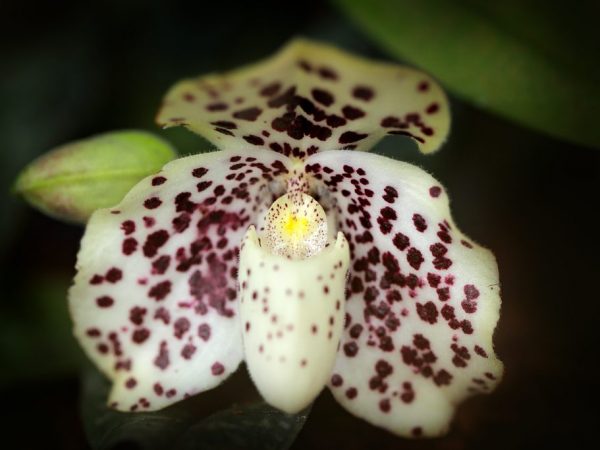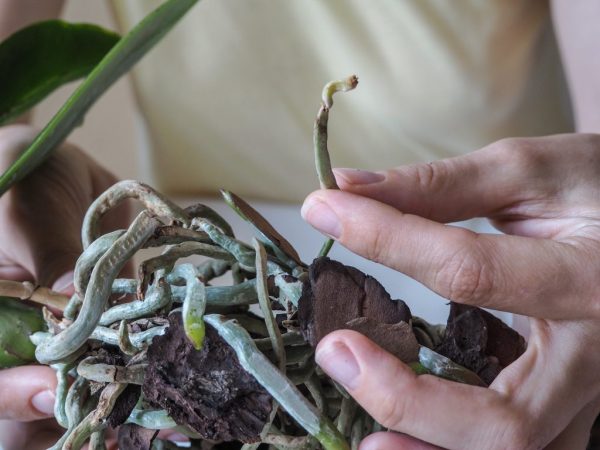Orchid variety Multiflora
The orchid is an exotic, sophisticated plant that symbolizes luxury and splendor. Since the middle of the last century, it has been included in the category of expensive and collectible flowers. Therefore, the Multiflora orchid is a good gift for lovers of fresh flowers.

Orchid Multiflora
Description of the variety
Phalaenopsis Multiflora orchid flower got its name due to the fact that it looks like a butterfly (from the Greek.phalaina - moth, opsis - similarity). This variety has the following description:
- A hybrid that perfectly tolerates room conditions.
- There are no growth buds; during flowering, the plant releases 4-6 arrows directly from the ground, located opposite each other.
- At home, Multiflora orchids grow up to 0.5 m;
- On the stem there are 4 to 6 leaves, in rare cases, their number reaches 10-12 pieces.
- The leaves are oval in shape, rich emerald color, leaf size from 30 to 35 cm.
- Flowers 3-6 cm in diameter;
- Flowers grow in the form of inflorescences of 10-20 pcs. On the peduncles, they are located in opposite rows. A plant can have up to 50 flowers at a time.
- Phalaenopsis Multiflora comes in: yellow, red, peach, pink, coral, golden, lilac and white.
During flowering, due to the special flexibility, flower arrows need support.
Growing
These hybrid plants, despite the differences from conventional varieties in flowering and external characteristics, have similar requirements for planting and subsequent cultivation. In winter, flowers are placed on the south side of the room. In the summer they are moved to the southeast or southwest. The flower needs a lot of air, but no drafts.
Landing
In order for the Multiflora orchid to develop normally at home, the following points should be adhered to during planting:
- prepare a container for a flower, it should be with transparent walls (for normal passage of sunlight), holes are needed at the bottom for water to drain;
- the volume of the container should easily accommodate the root system;
- soil preparation: it should contain pine bark;
- before planting, this natural material is thoroughly boiled for several hours;
- you cannot use fresh bark, there are a lot of essential oils in it, this is harmful to the hybrid.
Growing a new flower is possible in two ways: seeds and sprouts.
Seeds
This method is not available at home. The seeds are small, like dust particles, and for their germination it is necessary to create a certain microclimate. If a person is not engaged in professional cultivation, then he should not buy seeds.
Rostkom
The perfect way to get a new plant. As soon as a baby is formed on a peduncle or from a sleeping bud, it is immediately separated and planted in a new pot. After that, the top should be cut off and rooted with a few leaves. The main (parent) flower is fully restored after some time.

Growing Multiflora by sprout
Care
Orchid Multiflora, like other varieties of orchids, for example, Jillian, needs careful care.During transplantation, it is important not to injure the root system. Although the roots look strong, they are extremely brittle. 1.5-2 days before transplanting, the soil for impregnation is poured with water. During transplantation, diseased roots are removed. To do this, they should be separated from the ground, carefully inspected for brown or black dried out areas. The cut is sprinkled with activated carbon.
The plant should be kept clean, sometimes sprayed and dust removed from the leaves. The optimum temperature is 20-22 ° C during the daytime and 12-17 ° C at night.
For the normal development of the orchid, diffused, but at the same time, bright lighting is required. If climatic features do not allow observing the light regime, then it is worth organizing additional diffused lighting. It will provide the right amount of light. In summer, the flower should be protected from direct sunlight, as they leave burns on the sheets.
In the hot season, Multiflora is watered twice a week, in the cold season it is reduced to once. Excessive watering is dangerous for the root system, as it becomes the cause of the development of infections and leads to rotting of the underground part of the flower. Fertilization is carried out every 6-7 days. This is done with special tools purchased in florist shops. In order not to harm, flower growers recommend reducing the concentration of fertilizers by several times. After the end of the flowering period, the branches are pruned above 2 buds.
Diseases and pests
Like other hybrid orchids, Multiflora is susceptible to the following pests and diseases:
- ticks;
- aphid;
- snails and slugs;
- fungi;
- rot.
The reason for their appearance is improper care of the orchid.
Fight disease
When rot appears in the roots, they must be removed immediately. The rest are treated with Fundazole and sprinkled with cinnamon. Fundazole is a powerful substance that, if used improperly, slows down flower development.
If a fungus starts on the leaves, then the plant is sprayed with Fitosporin solution. During application, it is important to observe the correct dosage so as not to harm the roots.
Pest control
Aphids and spider mites quickly destroy the flower. To remove them, insecticides are used. They can be sprayed on the ground part of the plant or soaked along with the roots. The procedure is repeated, if necessary, after 5-7 days. After complete removal, the orchid is kept in quarantine.
Prevention
- You can not take the flower out into the open air, it attracts pests.
- Compliance with the basic conditions of detention.
- Carry out hygiene procedures once a week (spraying, warm shower to wash off dust).
- Fertilizers should be used to strengthen the plant's immunity.
- Regularly process the flower with Zircon.
Conclusion
In order for Phalaenopsis Multiflora to develop well at home, he needs to provide normal care and withstand a period of adaptation. Before purchasing, you should know all the cultivation features in order to grow a healthy plant without hassle.


